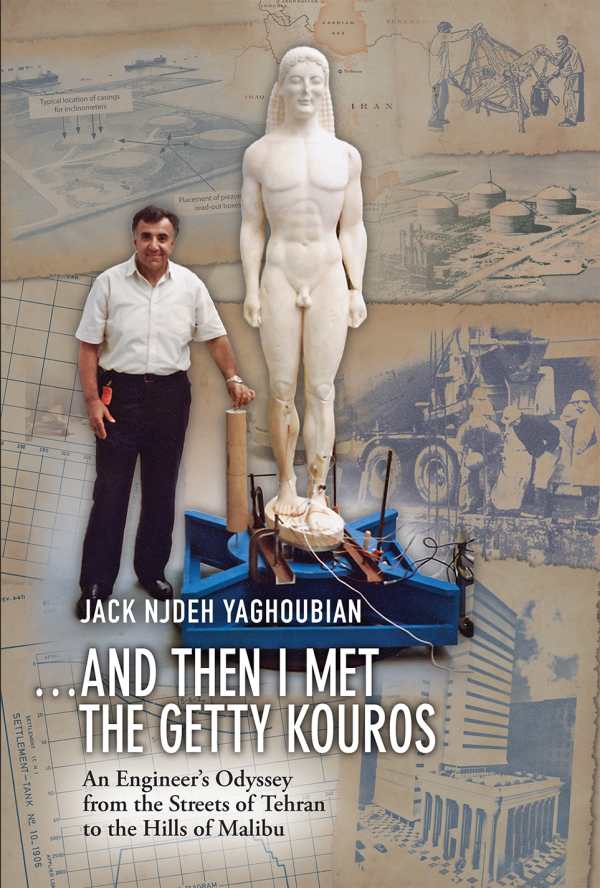...And Then I Met the Getty Kouros
An Engineer's Odyssey from the Streets of Tehran to the Hills of Malibu
Yaghoubian writes of the importance of attitude and deep involvement in meeting life’s challenges.
Engineer Jack Yaghoubian’s … And Then I Met the Getty Kouros is, like his life’s work, both durable and artfully assembled, covering his time in the worlds of useful and representational structures.
Yaghoubian’s “meeting” with the Getty Kouros—a shattered nude male statue dating to the sixth century BCE in Greece—became a pivotal moment for the statue and for the art world. For the author, it was an opportunity to apply his engineering experience and his problem-solving and creative thinking gifts. But the meeting occurred when Yaghoubian was fifty. He had already left his mark on a wide variety of major engineering and construction projects across five continents.
The memoir begins earlier, with Yaghoubian’s arrival in the United States as a prospective student in 1956. A proud Armenian Christian who was born and raised in Iran, his optimism, ingenuity, and “uncontrolled curiosity” served him well as an American student, a working man, and eventually as a model US citizen.
Memories shared from Yaghoubian’s childhood in Iran help explain the origins of his special gifts. His early fascination with the broken china restorer, for instance, who sang merrily as he artfully reassembled tiny decorative china fragments, influenced him tremendously. He hints that the Getty Kouros, which had been smashed into seven pieces, may have been his prompt to retool himself as a version of the broken china restorer. The book also details his membership in Ararat, an Armenian/Iranian scouting organization, which augmented his moral values, especially those of selflessness and cooperation.
Yaghoubian’s career left him with experience in the field of earthquake engineering, especially vital in site selection, design, and construction of nuclear plants, and his designs made it into infrastructure around Iran. He personally developed a radical new system to “de-link” art objects from walls, floors, and displays to protect them from earthquake tremors. That expertise proved essential to restoring the Getty Kouros, and his reassembly project helped to guarantee that the statue would remain intact for many years to come.
The memoir is replete with anecdotes and reconstructed memories, including many personal photographs. Story elements—dialogue, other people, tension—color its action and accessibility. Its focus is often on career decisions and the many projects that ordered Yaghoubian’s days, making this a largely professional memoir. Project names—the Holiday Inns of America project or the Ahwaz Airport project, for example—become section headings within chapters, and descriptions of the challenges, both personal and environmental, inherent to these projects are often accompanied by photos, drawings, and other documents. While Yaghoubian strives to use terminology and concepts that are digestible for a general audience, … And Then I Met the Getty Kouros might be of special interest to those with a technical or engineering background.
To this day, Yaghoubian’s innovations in engineering and the restoration and security of art are in evidence throughout the world. And in this work Yaghoubian writes, in hopes that others will take notice, of the importance of attitude and deep involvement in meeting life’s challenges.
Reviewed by
Joe Taylor
Disclosure: This article is not an endorsement, but a review. The publisher of this book provided free copies of the book and paid a small fee to have their book reviewed by a professional reviewer. Foreword Reviews and Clarion Reviews make no guarantee that the publisher will receive a positive review. Foreword Magazine, Inc. is disclosing this in accordance with the Federal Trade Commission’s 16 CFR, Part 255.

